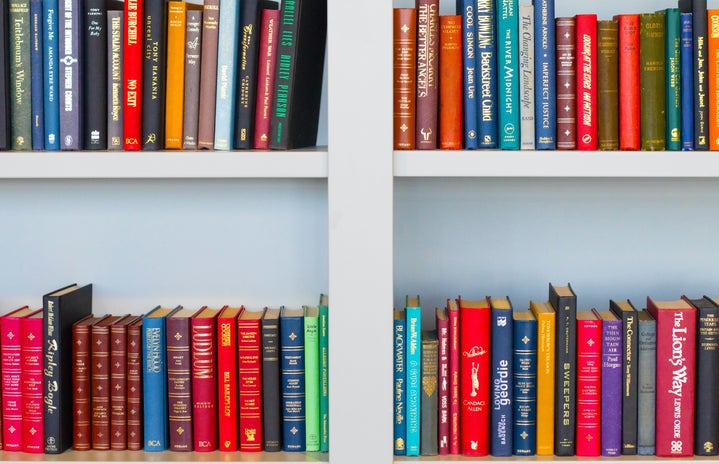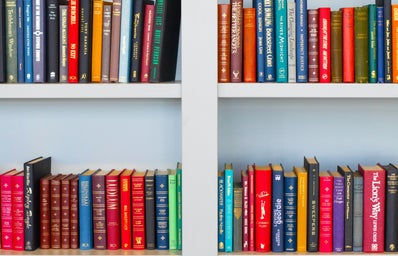Against my wall, to the right of my bedpost, is where the past indulges into the present. Here, a bookcase full of pages from eras long ago sits sore against a modern bedroom. One shelf contains medical books (all the way back from periods when they didn’t understand that virus cause illness…and mercury is the sickness, not the cure to it). A shelf below holds ancient textbooks, in which the memory of the owners is passed down from their scribbles. Some of them are older then the United States, each stained with the imprint of previous successors. My favorite story isn’t the one that fills the pages: it’s the hidden story that is portrayed in their lives.
My collection began the winter of my junior year, when my father and mother took me to Cape Cod on vacation. On the block where we had stopped for dinner was a buried, used bookstore. I entered in hopes to pass the time, and came across a remarkable thing. I had picked up an aged art history textbook that contained more then the history of da Vinci and Botticelli. Books, that had been used and beaten, somehow came to life within my hands. Here was the imprint of people, past and present, that had been carried down for over one hundred years. It was a feeling of inclusion, that as I purchased the book, I was carrying on the tradition of their lives. Nothing connected me to these people expect the fact we held the same book and read the same words. The names scribbled on the cover were strangers to me, and strangers to one another. Yet, every name that was written in that book was now connected together from the similarity of their interest. I fell in love with the idea that I could glimpse into a small part of a stranger’s life through the pages of a book.
I began to look at books like windows into a past society. My curiosity grew from the notes in pages, to the actual beliefs printed in the paragraph. Culture and ideas that were popular in a different era, seem fanatical in our time now. I indulged into the medical realm within this hobby. Medical advice given by officiated doctors during the period read more like a mad scientist’s diary. For example, common cures included mercury, and the brain was thought to be broken up into sections such as friendship and self esteem. We understand now that mercury, indeed, is poisonous, and that our brain is too complex to be sorted into such simple categories. Yet, these notions were socially accepted beliefs. I marvel in collecting parts of the past that have been debunked, because I can watch the progression of society through my own eyes. There is a sense of personal humbling in thinking that the brilliant people of the time were left questioning what gives you a “cold,” and how to properly treat the bubonic plague. In present day, these statements are more or less common knowledge. Yet, to the people of a past era, they were mysteries left to be uncovered. Thus, we understand the commonality of knowledge to be fluid, such that and that knowledge isn’t a permanent thing. For fact to be fact, it must be questioned, proven, and then questioned again. For me, I indulge in thinking of how our own present beliefs will be completely shattered and altered by future findings.
My hobby not only links past to present, but it also formulates a sense of society. These books act as my reminder to question every fact present, and to interrogation every statement. Our own knowledge is determined by questioning what we know. Through my collection, I am continuing the memory of those who came before me, and the culture that raised mine.

